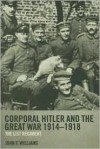Currently reading
Liberté, Égalité, Fraternité - LIVING IN REVOLUTIONARY FRANCE

"WHERE THE LIGHT FALLS: A Novel of the French Revolution" very much lives up to its billing. Upon turning the page, the reader quickly finds him/herself in Paris during the winter of 1792. The deposed King and Queen of France are imprisoned, awaiting trial for treason. The city is in tumult as men with radical ideas and a penchant for dispensing violent, retributive 'justice' have taken control of the national government. Along the streets in a horseborne tumbril are several condemned persons being taken to the Place de la Revolution. Despite the bitter cold, thousands of people eagerly await the spectacle soon to take place before their very eyes. "They sound impatient, shrill with the heady prospect of fresh blood to wet the newly sharpened guillotine blade." The spectacle then takes shape as - one by one - each condemned person is prompted to walk up onto the stage where 'le guillotine' awaits. The condemned person's head is placed within the guillotine's clutches. The audience views the scene with bated breath and fevered anticipation. A blade forming the top part of the guillotine set above the condemned person's head is released and with a swish, swiftly severs the condemned person's head, sending it into a basket set close by. Charles Dickens could have taken some lessons from the 2 writers of this novel, in terms of conveying a real, tangible sense of the early stages of what came to be known as 'The Terror', the darkest period of the French Revolution.
The novel then goes on to relate the stories of Jean-Luc St. Clair, a lawyer from Marseille who moved with his young family to Paris, where he works in an office handling claims involving deposed nobles; Andre Valiere, a young army officer of the ancien régime who has forsworn his noble heritage to join the Army of the French Republic; and Sophie de Vincennes, a young widow living under the close eye of a vindictive uncle who has powerful connections within the government. Her fate would later become entwined with Andre's.
The reader is carried from the depths of The Terror to the steady rise of Napoleon Bonaparte, who first made a name for himself as a military commander without equal, leading French armies to resounding victories against the Austrians in Italy and later in Malta and Egypt. All the while, France is in turmoil with the demand for justice breeding more paranoia and instability. "Jean-Luc, Andre, and Sophie find themselves bound together in a world where survival seems increasingly less likely - for themselves..."
This novel has all the hallmarks of a Class A thriller. It'll leave the reader breathless, a little dizzy, and glad to have read it.













